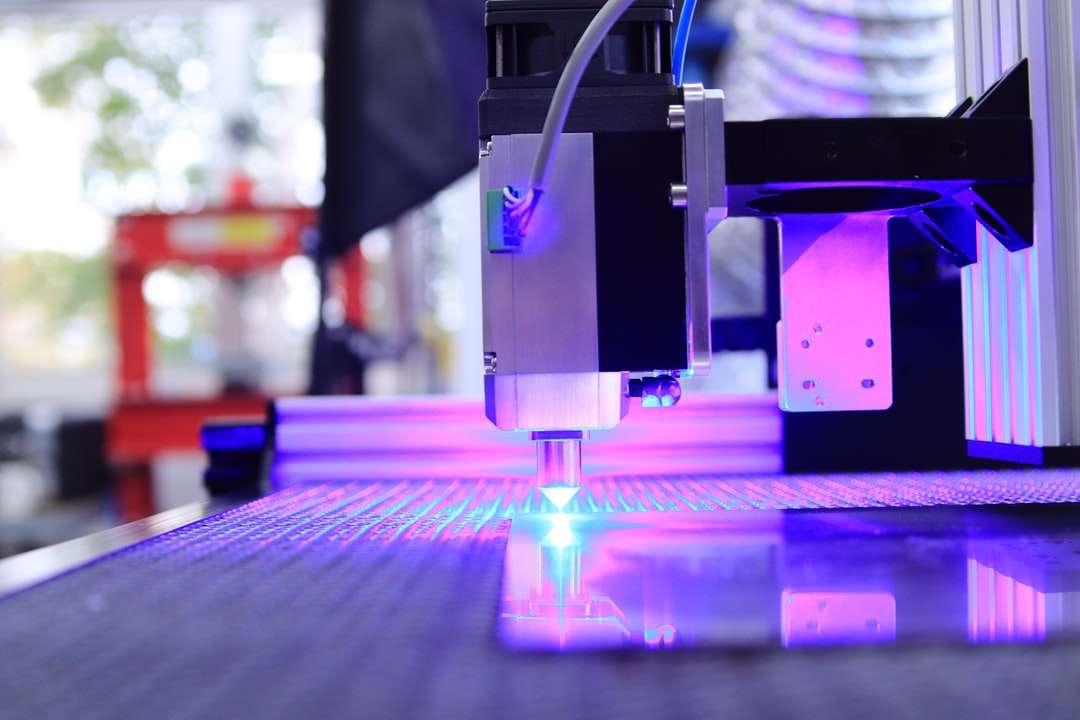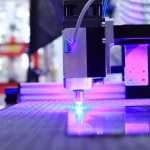What 3D Printing Is And How It Can Benefit Your Business?
3D printing is a process that uses plastic to create three-dimensional objects. It was first used to create models of buildings, but it has become more versatile. Many different types of objects can now be printed using 3D printers.
3D printers are transforming the world by creating objects, parts and even full-scale products that were once impossible to produce.
Introduction: 3D printing is a revolutionary technology that lets you create things in a digital file using a 3D printer. The first 3 D printer appeared in the 1980s, but with the invention of the Internet and the growing availability of computers, desktop 3 D printers became much more popular in the late 2000s. There are a number of different 3 D printing techniques including additive manufacturing, where the materials are layered on top of each other and fused together; subtractive manufacturing, where the material is removed from one object and used on another; and rapid prototyping, where a computer design is used to make a physical model of the final product. The 3 D-printing process can be used to create plastic parts, metals, ceramics, wax, leather, chocolate, concrete, food, and almost anything else you can imagine.
For a very limited time, I will teach you what 3 D printing is and why it’s important for all of us.
What Is 3D Printing?
3D printing is a process of making a three-dimensional object from digital files. The technology can be used to create objects from plastic, metal, and other materials. 3 D printing is sometimes called “additive manufacturing.”
3D printing is a process used to print three-dimensional objects through a digital model. These 3D prints come in a variety of shapes and sizes, but the most common types are plastic and metal. 3 D printing has many uses in the medical, industrial, and household sectors. In addition to being used for printing custom products, the technology can also be used to print spare parts or even entire products that need replacement. 3 D printers also help save time and money because they allow us to recreate designs that were previously printed through traditional methods.

What is 3D Printing? Benefits, Applications, Risks & Future
The technology itself is simple. A computer program uses a three-dimensional design to create the object. The printer creates layers of material. After each layer is created, the software lays down another layer, creating a finished product. The process starts with a CAD file of the 3D model. Once the file is opened, the design can be easily manipulated in any number of ways.
Benefits of 3 D printing include the ability to create complex objects quickly and at low cost. Uses of 3D printing include the production of parts for machines and products, as well as the creation of prototypes and models. Risks associated with 3D printing include the possibility that the technology will not be able to produce high-quality objects in large quantities.
Applications of 3D Printing
3D printing is changing the way people live. It’s allowing anyone with a smartphone and a few dollars to turn ordinary items into wearable art. Some companies are even offering people the opportunity to print their own prosthetic limbs for free. And 3D printing is just getting started. Within the next few years, it will likely be used to create houses, cars, clothes, tools, toys, furniture, and even food. 3D printing will likely be a part of our everyday lives. And what could be more fun than that?
3D printing may be one of the most exciting technologies in the world right now. However, it has many applications and uses that you may not have considered. Here are two quick examples that will likely have you thinking about using your 3D printer for something other than just 3D printing:
1) 3D printing is extremely useful for prototyping and creating models for manufacturing. In fact, it may be the only way to create a prototype for large-scale manufacturing. Once you have a prototype that shows the functionality of the final product, it’s much easier to produce in mass quantities.
2) 3D printing allows you to make parts that would otherwise be prohibitively expensive to produce. There are many applications that 3 D printing is used for in everyday life, but 3 D printing can also be used in the realm of science. NASA recently released a video demonstrating how a 3D printer made a working part of a rover that landed on Mars.
How Does 3D Printing Work?
The technology of 3D printing has been around for a few decades, but it has only recently begun to be used more extensively. 3D printing is a process by which objects are created from layers of material that are built up one on top of the other. This technology can be used to create objects from a variety of materials, including plastic, metal, and even food.
3D printing is the process of creating three-dimensional objects via a computer-controlled additive manufacturing process, which involves layer-by-layer deposition of materials. This is done by melting, extruding, spraying or otherwise applying the material, often layer upon layer, into a shape on the 3 D printer. Once the printed object is complete, it can be used just like any other physical object, including cutting it apart and reassembling it. A 3 D-printed object can be hollow, solid, or both, and can be formed from virtually any material, from hard plastics to metals to rubber. 3 D printers come in a wide variety of forms and sizes, ranging from tabletop models to industrial machines used to make components for spacecraft.
What Are the Benefits of 3D Printing?
3D printing technology is revolutionizing the way products are designed, manufactured and assembled. By using a three-dimensional printing process, manufacturers can create parts from multiple layers of material to create a custom product. These benefits include:
• Reduced manufacturing time – 3D printing technology can help reduce the time needed to create a product by creating multiple copies of a part instead of having to make an entire product from scratch.
• Customized products – Having the ability to create customized products allows for more customization and accuracy in manufacturing. This results in products that are both more functional and aesthetically pleasing.
• Reduced waste – 3 D printing technology can help reduce the amount of waste that is produced during manufacturing by creating parts that are precisely fit for their intended purpose. This reduces damage of raw material.
What Are the Risks of 3D Printing?
There are also some potential risks associated with 3D printing, including the risk of accidents or injuries when using the technology, as well as the risk that unauthorized individuals could access sensitive information stored on 3 D printers or use them to commit crimes.
Next risk is that 3 D printing can be dangerous if it is not done properly. For example, if a 3 D printer is used to print objects that are too large or too heavy, it could cause serious injuries. Additionally,3D printing can also be dangerous if it is used to create weapons or hazardous materials. Finally, there is the risk of hackers being able to 3D print objects that are harmful or destructive. All of these risks must be weighed before deciding whether or not to use 3 D printing in a particular situation.
The Future of 3D Printing
What could 3D printing really mean for us as a society and our lives? Imagine that you had a house with walls that you could build, walls that you could move around and rearrange to suit your needs, walls that you could alter and even decorate at your leisure. You can do this with 3 D printers. We can design and print all kinds of objects in many forms, from furniture and clothing to toys and kitchen utensils. These new 3D printers are making the construction industry a whole lot more accessible than it ever has been before. As technology continues to develop, we will likely see many new and exciting possibilities in the coming years.
There is a very high potential to 3D printing in many industries, especially in the medical field. Right now, the cost of 3 D printing is fairly expensive. But, this technology is growing and will continue to improve. At the end of 2022, the price of 3 D printers will drop drastically. Also, they can print with plastic and metal. This will open up a whole new set of options.
People all over the world are using 3D printers to manufacture real objects, from shoes to books to art. In fact, one company has a 3 D printer that prints out entire homes. In a lot of ways, 3D printing has been the biggest story of the decade and it’s only just getting started. 3 D printing was introduced as an industrial product, but thanks to improvements in technology and lower costs, it’s becoming increasingly common to purchase a 3 D printer for home use.
Conclusion: 3D printing is a revolutionary technology with many benefits. However, there are also some risks associated with its use. As governments and businesses continue to explore the possibilities of 3D printing, it is important to be aware of both the benefits and risks involved.
I am a professional content writer and have experience of 10 years. I also launched first ever English monthly magazine of human rights in Pakistan. Majority of content on this website is written by me.

